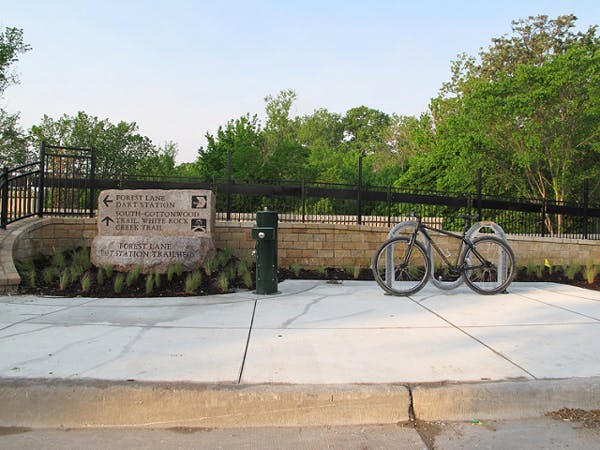Four Ways to Go Beyond Bike Friendly
By: Kimberly Kinchen, business network writer

Mobility and smart connections are more than just buzzwords. Even as many social and business transactions have moved online, transporting goods and people will always be fundamental to commerce. The limitations of geometry are clear: only so many cars can use highways and streets at peak hours, and that calculation won’t change if or when autonomous vehicles come online in large numbers. This simple fact provides businesses with a compelling rationale for integrating biking, walking, and transit into their transportation future.
Plenty of businesses have caught the bike-friendly bug, adding ample and secure bike parking, providing cash incentives for riding, supporting local bike advocacy efforts, and sponsoring the occasional bike education event or ride. Transportation realities aside, these investments stand to benefit businesses and employees alike: the health benefits of even moderate physical activity are well-documented, and better health can accrue to the bottom line in the form of fewer sick days and higher productivity. For staff, bike commutes can promote well-being, not to mention reduce personal costs of commuting.
Some leading companies are going above and beyond employee incentive and community programs, by building an environment that makes it easy and comfortable for employees to “go by bike” to and around work.
1. Creating safe connections

Firms can partner with nearby communities to provide safety improvements, create connections, and fund infrastructure improvements that connect to the corporate campus and encourage employees to try biking.
Texas Instruments (TI) added bike-friendly basics like racks, repair stations, and on-site showers at its global headquarters in Dallas. Then, TI looked beyond the campus to the nearby Cottonwood Trail. The company supported the expansion of the trail, including building safe connections from the trail to the campus. Seed money, land donations, and matching employee contributions from TI helped staff and the surrounding community establish a stake in the expansion. TI’s efforts helped to close four short but critical missing links to create a safer and uninterrupted 35 miles of car-free biking and walking between Plano and downtown Dallas. Trail improvements near campus included a connection to a light rail station, making it easier for employees to choose a combine bike/rail or walk/rail commute.
2. Hiring dedicated staff and establishing repair facilities
Hiring, empowering, and funding a transportation manager and establishing a dedicated bike shop can provide a high-visibility signal of support for bike commuting. Increasingly, many large companies hire Transportation Demand Management (TDM) staff charged with enticing commuters out of their cars and into vanpools, busses, or bikes. Facebook is truly a best-in-class example. The social media giant created a staffed Transit Hub at their Menlo Park headquarters, offering drop-off bike repair, a 24-hour self-service station, and regularly scheduled events that include classes to help employees get started with bike commuting or learning basic bike repair.
3. Launching a campus-based bike share system

For headquarters that sprawl over tens or hundreds of acres, bike share is often the quickest and most efficient way to navigate around campus, and requires relatively few physical and fiscal resources. In 2011, Apple launched a 420-bike fleet at its Cupertino headquarters. 2,000 employees signed up in the first two months, taking an estimated 6,500 trips per month. At Apple’s new — and enormous — headquarters, also in Cupertino, the company is providing 1,000 bikes. Bike share works in dense urban settings, too: funding free or reduced bike share memberships can encourage people to try bike commuting, and grabbing a bike to get to a cross-town meeting may be quicker and cheaper than driving when the traffic grid is jammed up. Bike share is a popular choice: Facebook, Google, LinkedIn, Kaiser Permanente, and Target, to name only a few, all offer employees some form of bike share.
4. Investing in on-site infrastructure
Creating on-site bike lanes separated from traffic is one of the most inviting things an employer can do to encourage bike commuting, especially when those lanes cover the critical “last hundred yards” of a commute trip. In 2013, Amazon funded the installation of a protected bike lane running on Seventh Avenue in Seattle, right up to one entrance of its headquarters. The company also helped fund a study on extending the new lane to Pine Street, a major east-west bike route. The relatively modest investments laid the foundation to connect Amazon to Pine and other key bike routes nearby. The strategy is paying off: early this year, the city began construction to extend the Seventh Avenue protected lane two other nearby routes, linking into Seattle’s emerging connected bike network.
When large companies embrace these best bike practices into their headquarters, they make bicycling,walking and transit real transportation options. And, they champion a future where commerce and communities can thrive side by side.
Related Locations:
